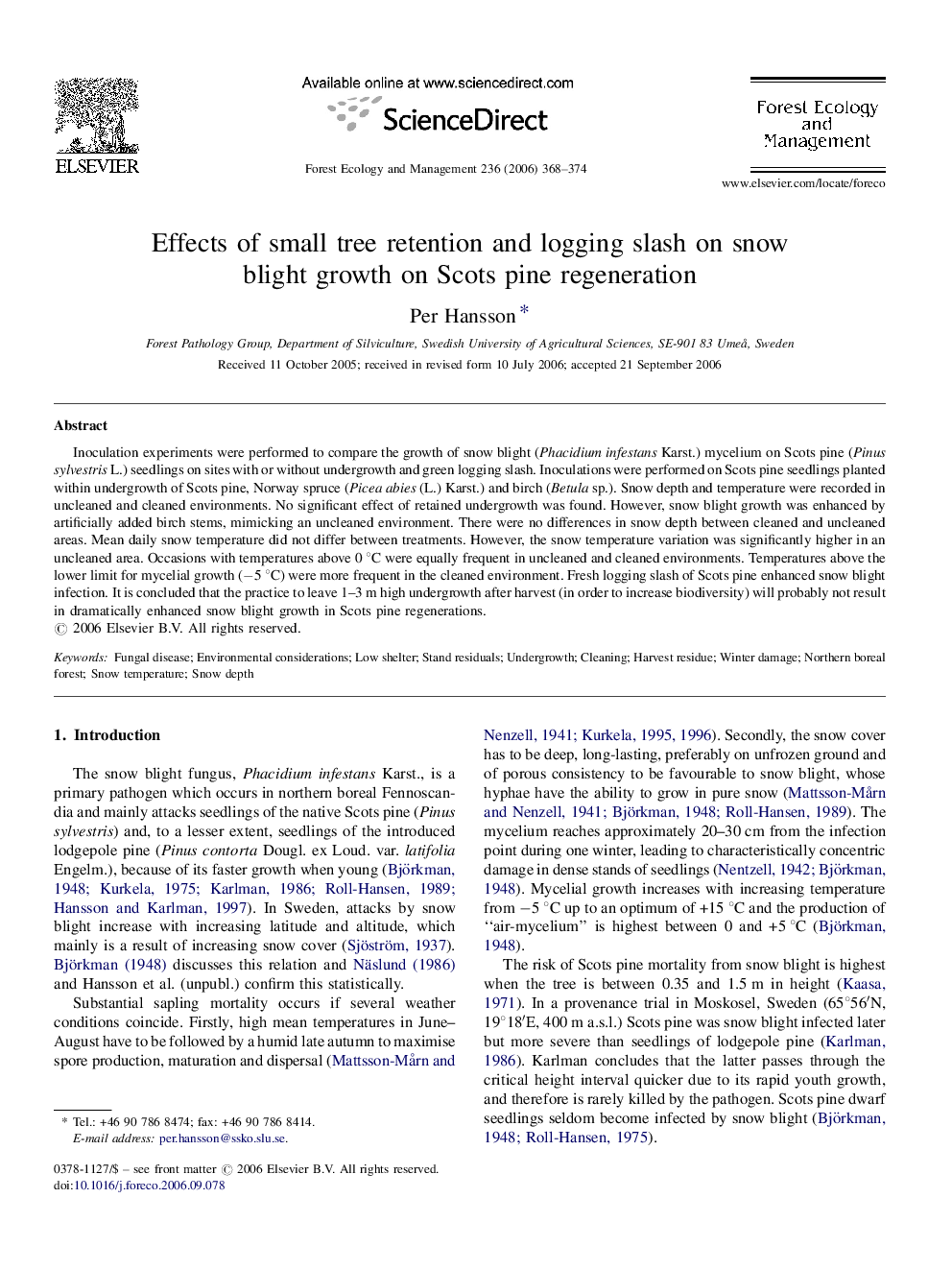| Article ID | Journal | Published Year | Pages | File Type |
|---|---|---|---|---|
| 90014 | Forest Ecology and Management | 2006 | 7 Pages |
Inoculation experiments were performed to compare the growth of snow blight (Phacidium infestans Karst.) mycelium on Scots pine (Pinus sylvestris L.) seedlings on sites with or without undergrowth and green logging slash. Inoculations were performed on Scots pine seedlings planted within undergrowth of Scots pine, Norway spruce (Picea abies (L.) Karst.) and birch (Betula sp.). Snow depth and temperature were recorded in uncleaned and cleaned environments. No significant effect of retained undergrowth was found. However, snow blight growth was enhanced by artificially added birch stems, mimicking an uncleaned environment. There were no differences in snow depth between cleaned and uncleaned areas. Mean daily snow temperature did not differ between treatments. However, the snow temperature variation was significantly higher in an uncleaned area. Occasions with temperatures above 0 °C were equally frequent in uncleaned and cleaned environments. Temperatures above the lower limit for mycelial growth (−5 °C) were more frequent in the cleaned environment. Fresh logging slash of Scots pine enhanced snow blight infection. It is concluded that the practice to leave 1–3 m high undergrowth after harvest (in order to increase biodiversity) will probably not result in dramatically enhanced snow blight growth in Scots pine regenerations.
